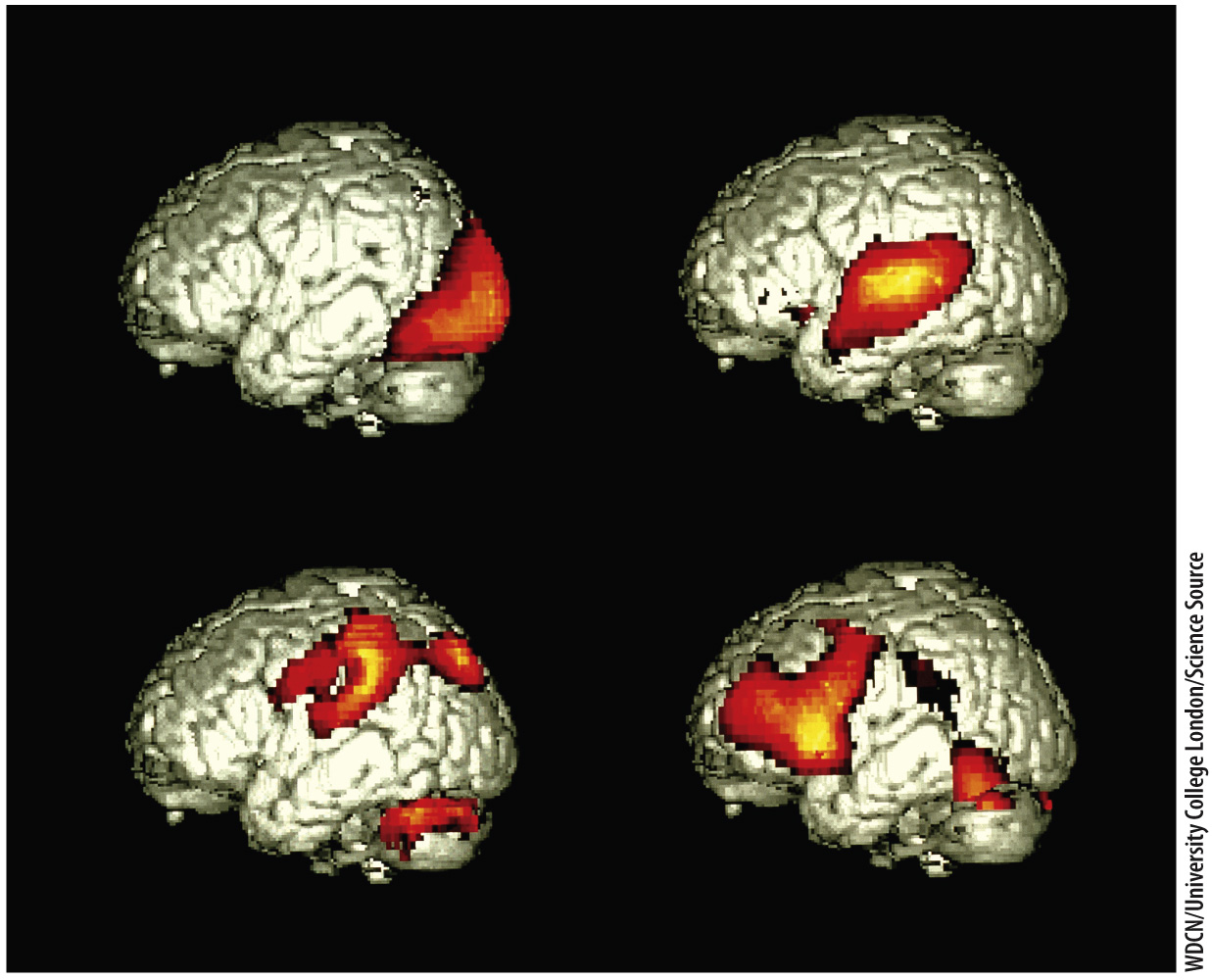Cognition involves brain information processing and decision making.
Cognitive brain function ultimately gives rise to a state of consciousness—an awareness of oneself and one’s actions in relation to others. Consciousness allows judgments to be made about events and experiences in one’s environment. When you suddenly see someone you recognize from long ago, rapid neural associations within the cortex identify that person by name, retrieve multiple memories of past events you shared with that person, and elicit conscious thoughts, including your opinion of that person. At the same time, extraneous sensory information is filtered and other thoughts recede, allowing you to focus your attention on the person you have just seen and recognized.
Mental processes are studied by relating changes in brain activity to changes in an animal’s behavioral state. The study of the brain is challenging because of the complexity of the circuits involved. Nevertheless, considerable progress is being made through non-invasive neuroimaging techniques (Fig. 36.26). These techniques allow the interactions of different brain regions within human and other animal subjects to be investigated while the subjects perform a particular mental or motor task. The results of neuroimaging studies can be linked to studies of the molecular and cellular properties of nerve cells, to advance our understanding of how nerve cells form and maintain neural circuits among different brain regions, and of how these circuits are linked to particular behaviors and cognitive processes.

FIG. 36.26 Non-invasive imaging of brain function. PET scan imaging reveals regions of metabolic brain cell activity. The reddish areas show the locations of (upper left) the visual area activated by sight, (upper right) the auditory area activated by hearing, (lower left) the tactile area activated by touching braille, and (lower right) areas of the frontal cortex activated by generating words.
Page 782
Do animals other than humans have a conscious state of awareness? Although the conscious awareness of other animals is difficult to study, it seems clear that many animals exhibit conscious states of awareness that influence their experience and behavior. Donald Griffin, known for his codiscovery as an undergraduate of bat echolocation, advocated the view not only that animals are conscious, but also that animal consciousness is amenable to scientific study. Behavioral biologist Marion Dawkins summarized her review of studies on animal cognition and consciousness as follows:
Our near-certainty about [human] shared experiences is based, amongst other things, on a mixture of the complexity of their behavior, their ability to “think” intelligently, and on their being able to demonstrate to us that they have a point of view in which what happens to them matters to them. We now know that these three attributes—complexity, thinking, and minding about the world—are also present in other species. The conclusion that they, too, are consciously aware is therefore compelling.
